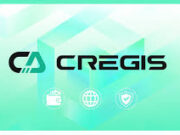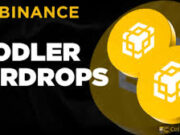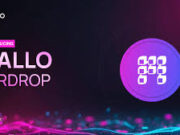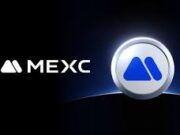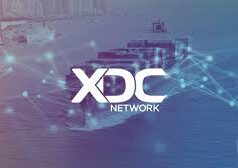On November 13, the landscape of blockchain-enabled play shifted significantly when industry leaders convened in Vietnam for a landmark event: the launch of the new global industry alliance alongside the unveiling of Mythoria. The gathering brought together developers, investors and GameFi enthusiasts to explore how Web3 technologies are reshaping interactive entertainment.
A New Era for Web3 and GameFi
The event served not only as a product launch but also as a signal: the formation of the GAMEFI Global Industry Alliance (GGIA), conceived to drive cooperation, standard-setting and growth across blockchain gaming. While formal details remain light at this stage, the alliance’s ambition is clear: unify stakeholders, amplify infrastructure, and enable better pathways for monetisation, ownership and user engagement in Web3 games.
Vietnam, with its tech-savvy youth and burgeoning crypto adoption, was a compelling setting. Research shows the country boasts one of the highest crypto-asset adoption rates globally, and GameFi has gained traction among Vietnamese players and investors. (Bitget)
Significance
Why should game-developers, investors or gamers pay attention? Quite simply: this summit marks a convergence of several major trends. First, the blending of game development with decentralised finance (GameFi) is moving beyond niche experiments into more mature ecosystems. Second, alliances like GGIA represent a structural shift: less fragmentation, more coordination. And third, the regional context—Southeast Asia, and Vietnam in particular—is becoming a hotbed for Web3 gaming adoption and innovation.
In Vietnam, GameFi isn’t just hype: it’s a real part of the gaming ecosystem. One report found that Vietnam’s GameFi users accounted for large portions of blockchain game adoption, and local investment behaviour shows clear interest in the sector. (abga.asia) As a result, launching such a summit here sends a message: Web3 gaming is moving from early adopter to growth phase.
The Mythoria Product Launch: What We Know
At the heart of the event was the launch gala for Mythoria. According to the pre-announcement on social media, the countdown indicated this was the inaugural product launch for the summit. (X (formerly Twitter))
While full gameplay and tokenomics details remain under wraps, what emerged is that Mythoria aims to combine immersive gaming mechanics with blockchain infrastructure—connected to the wider GameFi ecosystem. Attendees got a first look at preview demos, development road-maps and upcoming partnership announcements.
By aligning the product launch with the alliance’s formation, the event reinforced the message that new Web3 games should not stand alone—they should plug into broader ecosystems, guilds, infrastructure and standards. That’s essential if GameFi is to scale beyond early hype.
Key Highlights From the Summit
- Panel discussions & developer tracks: The summit featured expert sessions on public-chain integration, monetisation models, guild/community dynamics and investor sentiment. While we don’t have the full transcript, past summits (e.g., the 2023 iteration) have stressed the importance of hybrid Web2/Web3 skillsets, infrastructure readiness and user acquisition strategy. (Metaverse Post)
- Alliance launch ceremony: The GGIA announcement signals an increased push for collective standards—governance, economy design, interoperability and best practices.
- Regional focus: By choosing Vietnam, the organisers reinforced Southeast Asia’s role as a strategic growth region for Web3 gaming. With the demographic tailwinds (young population, mobile-first behaviour) and government interest in blockchain, it makes sense. (Bitget)
- Networking & deal-making: As with most industry summits, the value lies as much in the informal corridors as on stage. Developers, publishers, infrastructure providers and investors had opportunity to connect—a sign that the ecosystem is becoming more relational and less fragmented.
Implications For Developers and Investors
For game creators: this is one of those moments to rethink architecture. A few take-aways:
- Focus on player economy design early. As one developer at a previous Web3 summit noted, building the game means building the economy. (BitPinas)
- Community and guild systems matter. Web3 games aren’t just about token design—they’re about network effects, ownership, community participation.
- Choose chains and infrastructure wisely. Scalability, cost, UX (wallets, onboarding) remain pain-points.
- Look for ecosystem alignment. The presence of the GGIA suggests that games plugging into alliance-approved standards or networks may gain head-start.
For investors: the message is similar but from another angle.
- The sector is maturing; generalist bets may give way to selective, infrastructure-driven or region-focused opportunities.
- Southeast Asia (and Vietnam) is a growth region—not just by numbers but by latent demand for new gaming experiences.
- Partnerships and alliances may offer risk-mitigation. Games aligned with networks or alliances may be better positioned than standalone launches.
Next Moves and Challenges
Although the summit sets a tone, the real work is in execution. A few key fronts to watch:
- Adoption & retention: Launching a game and a token is one thing; maintaining engaged users over time is quite another. Web3 games must prove sustainable beyond the “earn and exit” model.
- Regulation & compliance: Vietnam (and Southeast Asia more broadly) remains somewhat ambiguous in regulatory frameworks for digital assets and Web3. Developers and investors must stay alert. (Wikipedia)
- Interoperability & infrastructure: The promise of Web3 games often hinges on seamless wallets, cross-chain functionality, guild integrations and in-game marketplaces. If any of these fail to mature, user experience suffers.
- Standing out in a crowded field: With dozens, perhaps hundreds of Web3 game projects launching, differentiation matters: beyond token mechanics, strong gameplay, narrative and community will count.
Why This Milestone Should Not Be Ignored
While some may dismiss such summits as just PR or hype, this event is different because of its alignment: product launch + alliance formation + regional focus. It’s one thing to launch a game; it’s another to announce a global industry alliance on the same stage. That signals confidence and ambition across participants.
Moreover, the choice of Vietnam highlights how growth-markets are stepping up. Western audiences may often take headlines, but Asian markets—especially Southeast Asia—are where user growth, mobile dominance and crypto adoption converge. The stats back this: 20 + million people in Vietnam have used digital assets and the GameFi penetration continues to rise. (Bitget)
Final Thoughts
The November 13 summit in Vietnam may well be remembered as a turning point for GameFi and Web3 gaming—not just in theory but in structure. The launch of Mythoria signals next-gen gaming intent; the formation of the GAMEFI Global Industry Alliance signals ecosystem ambition.
For developers, the path forward is clear: build games with sturdy economies, engaged communities and interoperable design. For investors, the signal is also clear: infrastructure, region‐specific growth and alliance-aligned projects deserve attention.
If you’re in the Web3 gaming space—whether you develop, invest, or play—this event is one to bookmark. The era of “just a blockchain game” is evolving into “blockchain game as part of a global game-ecosystem.” And in that ecosystem, how you plug in may define your trajectory.
Sources
– Web3 GameFi investment and Vietnam user stats. (Bitget)
– Information on prior Web3 Gaming Summit and industry context. (Metaverse Post)
– Pre-announcement of Mythoria launch. (X (formerly Twitter))



